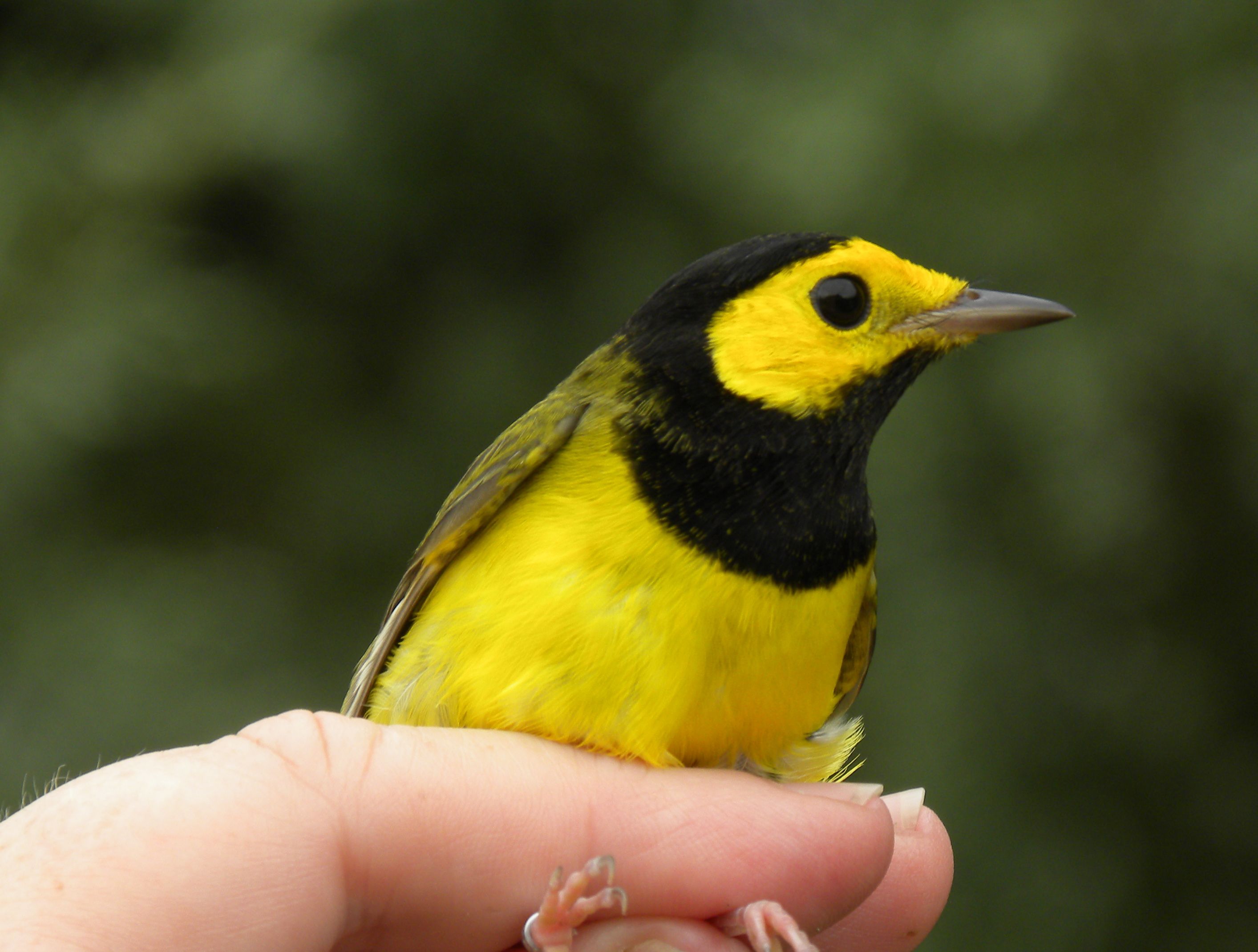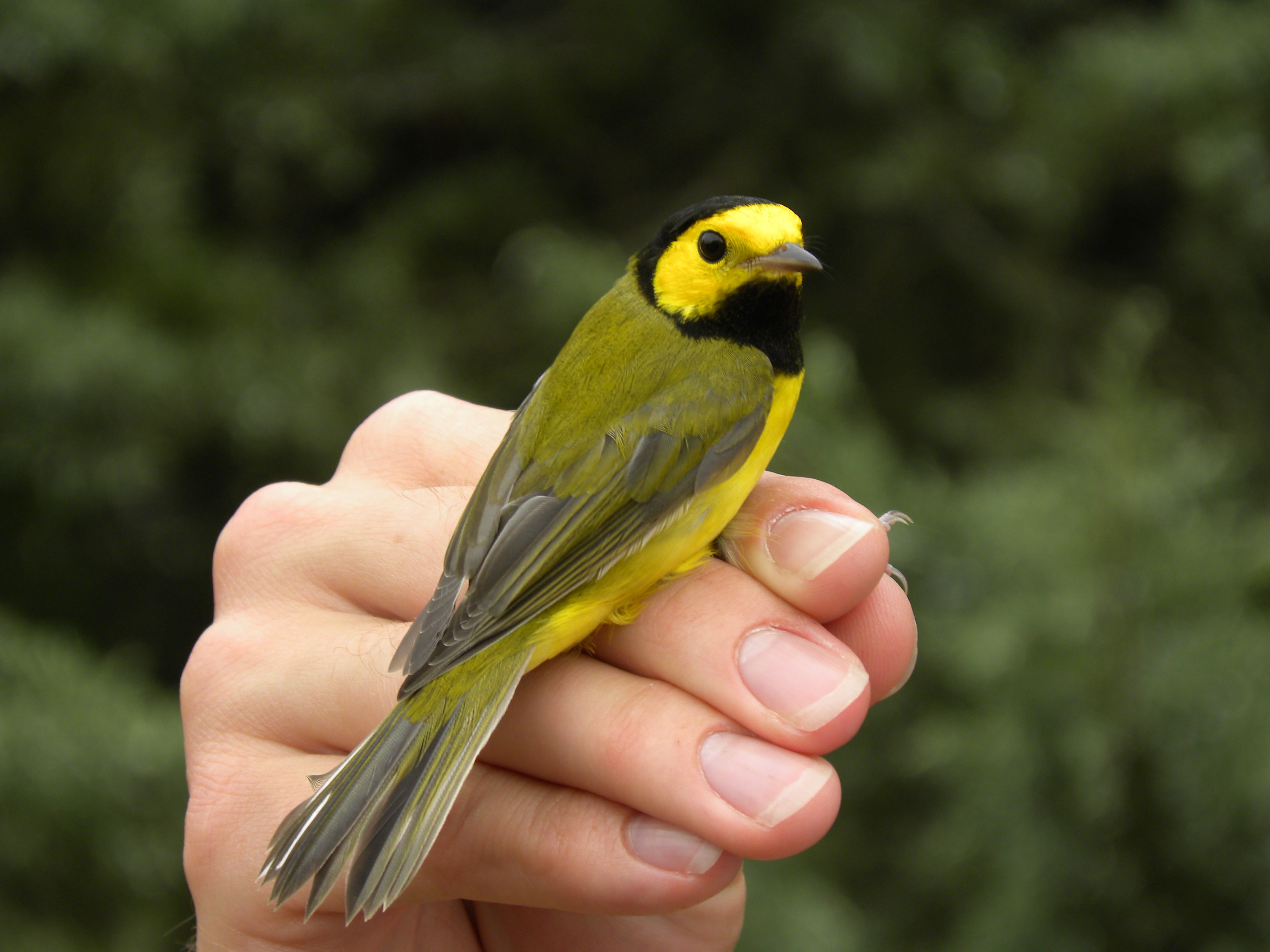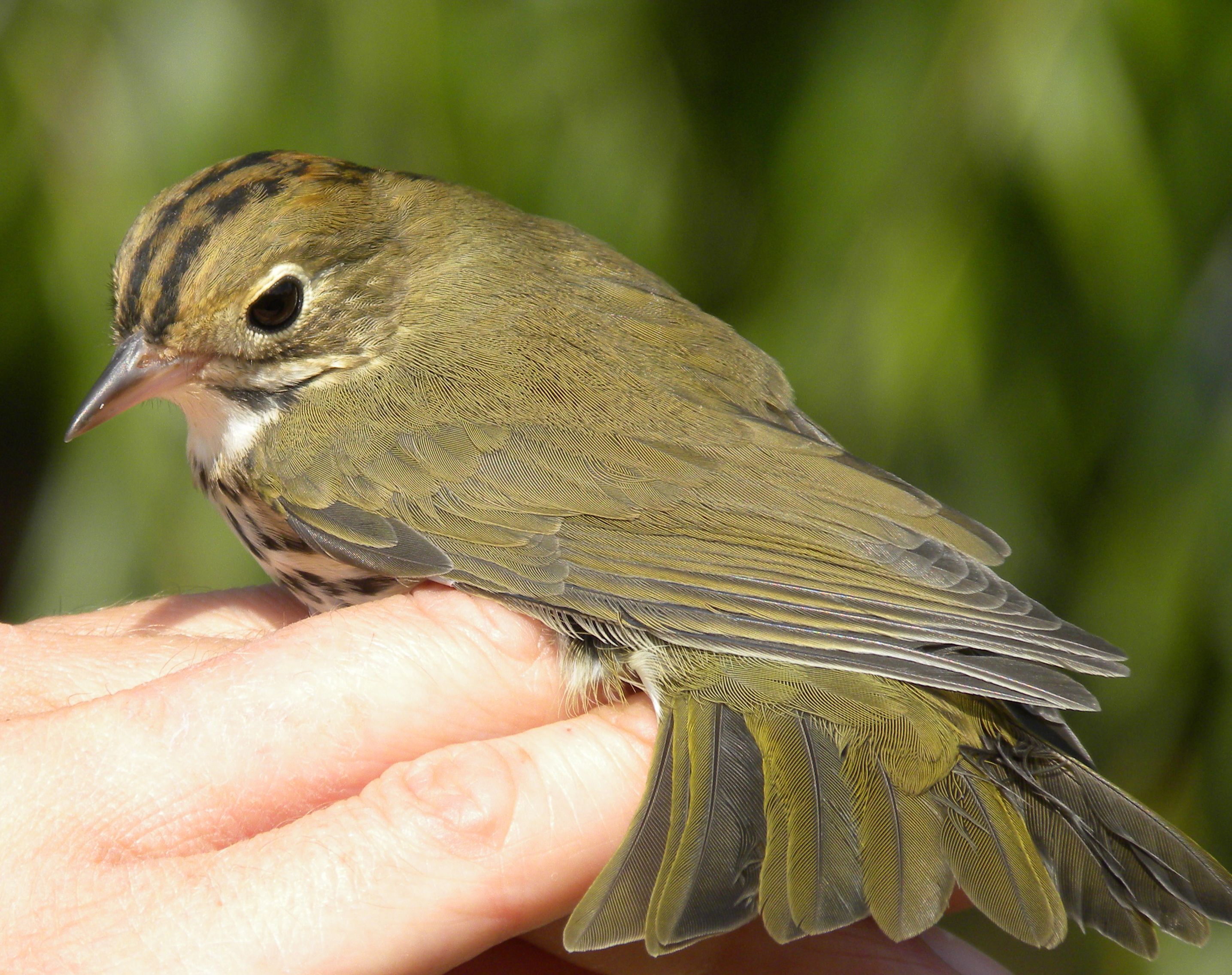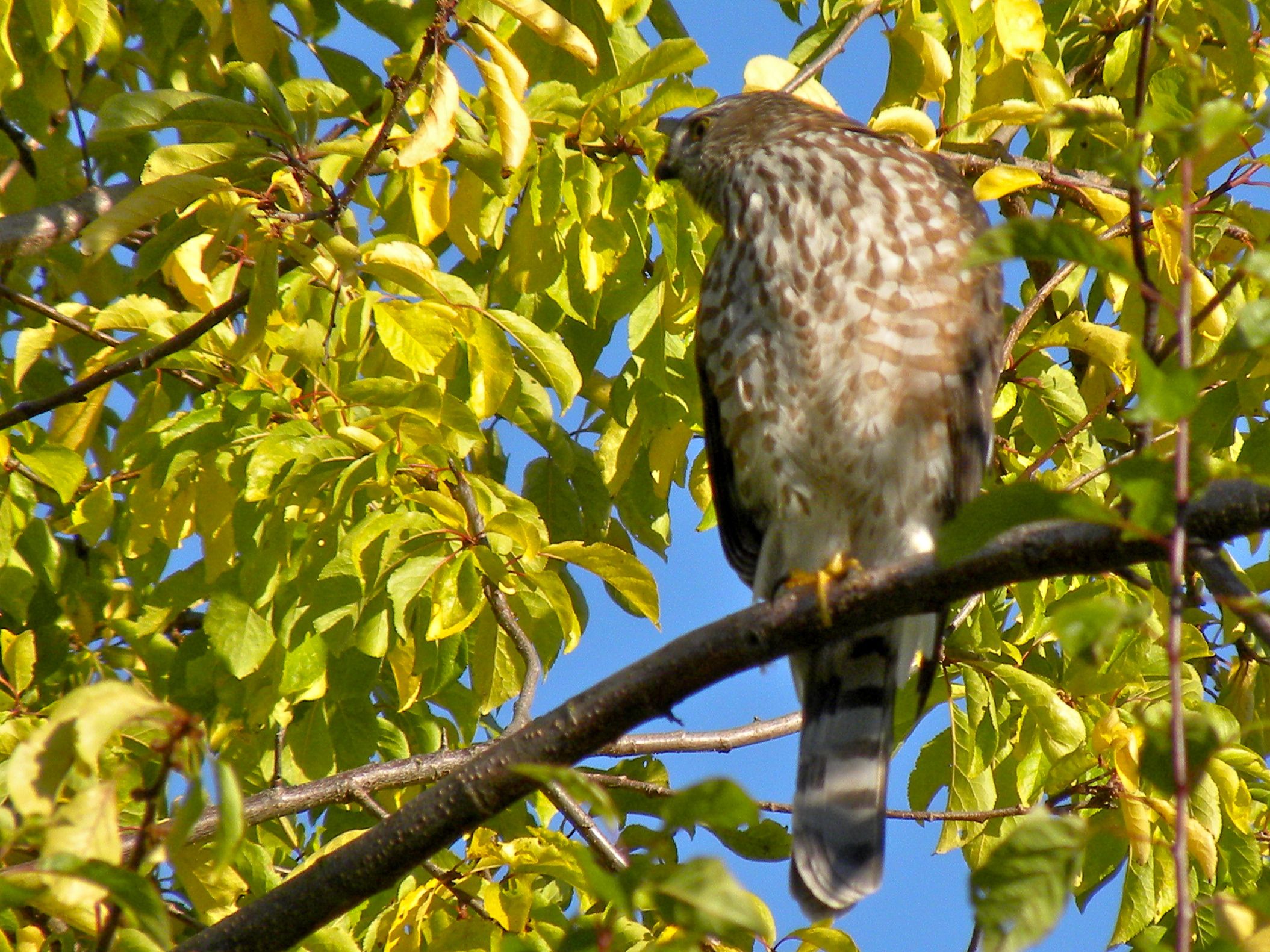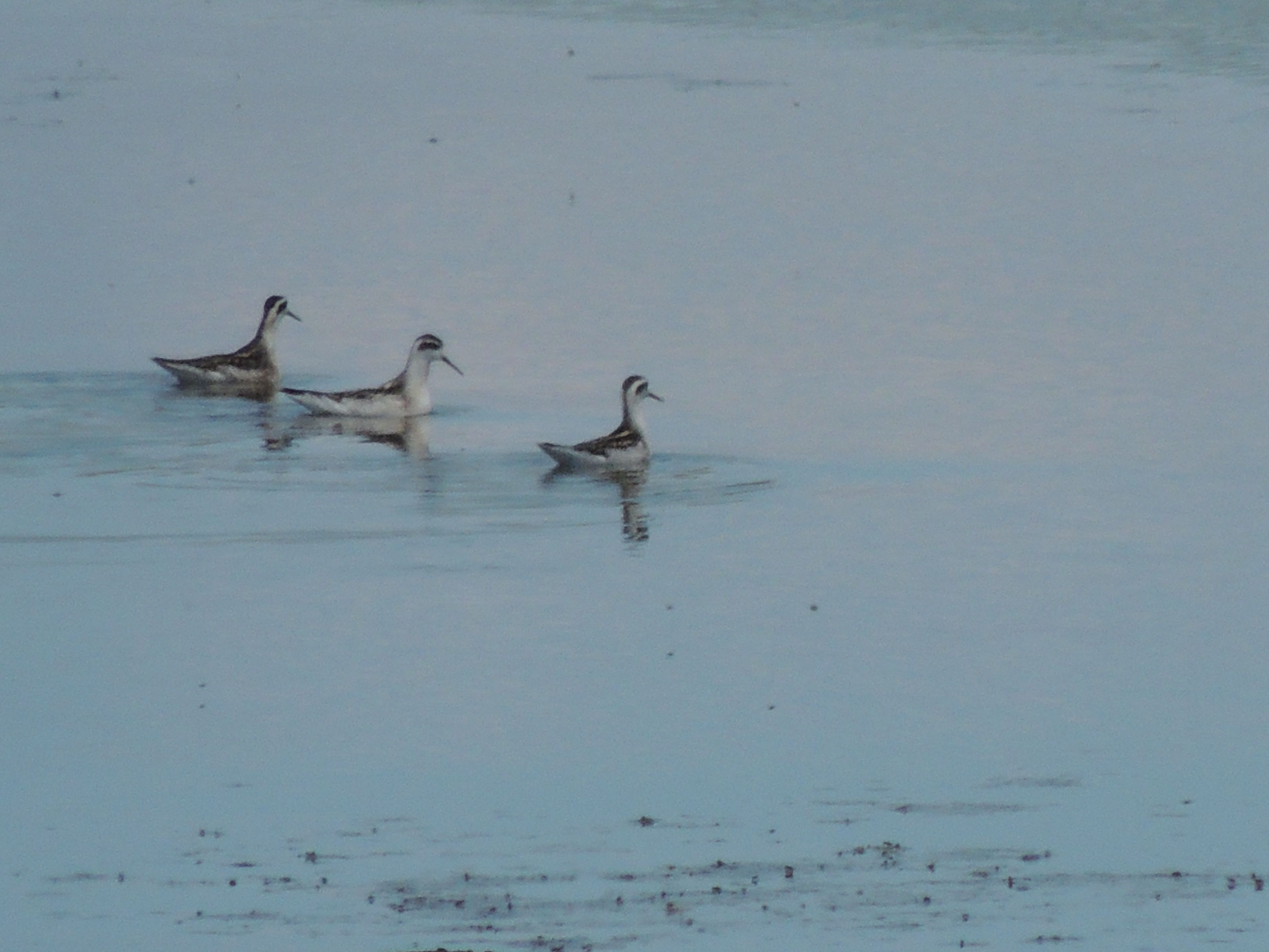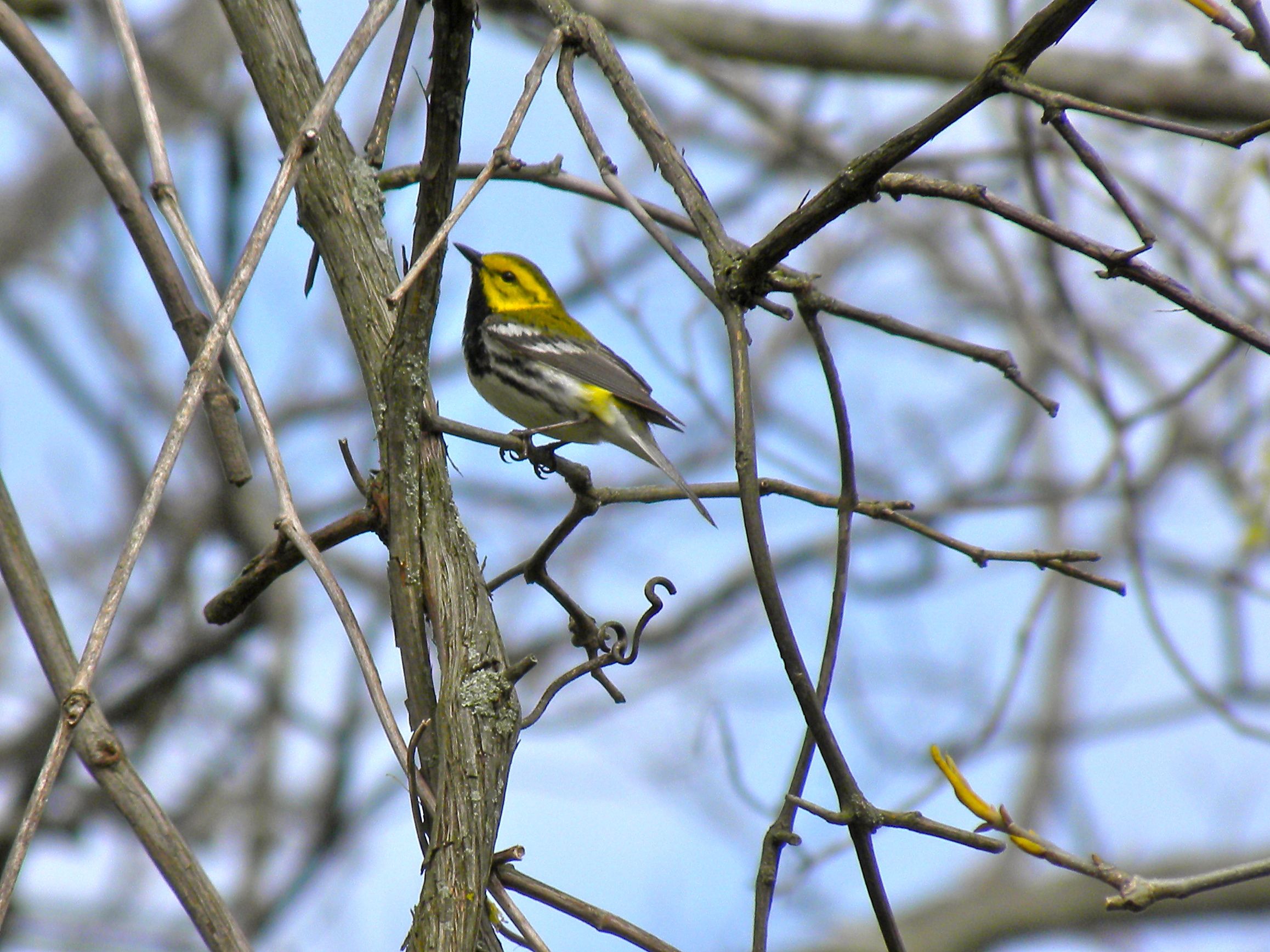September 4 2012. Ruthven Park, Cayuga ON. Back early to the bird observatory today, they’re a little short handed and well, it’s interesting and always challenging. The weather had deteriorated since the summer glories of the past week or so, rain threatened all morning today and even went so far as to dampen us with a mid morning shower; a nice warm one though.
I started the census at 08.45 but had to abandon it after half an hour or so when the shower struck. The birds must have known something was up and left town because in that half an hour I only counted 11 species. Once the rain had passed over I restarted and turned up 29 species including a couple of Purple Finches, a small and agitated group of Philadelphia Vireos high in the treetops and a nice Eastern Kingbird sitting atop a dead tree watching over the world below.
Towards the end of the morning we found and banded a young male Hooded Warbler. He was without doubt my Bird of the Day because absolutely nothing else today, not even a couple of Blackpoll Warblers, Common Yellowthroats or Wilson’s Warblers, came close to delivering the same OMG impact. (Take a look at the observatory’s blog here) Hooded Warblers are uncommon in Ontario, there are small pocket populations around the west end of Lake Ontario and along the north shore of Lake Erie. But in the central eastern states of the U.S.A it is a fairly common breeding bird.
Any human as striking and stunningly pretty as this bird would surely quickly make his way to become a preening and self-important celebrity.
